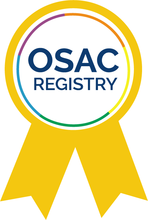November 2019
The Organization of Scientific Area Committees (OSAC) for Forensic Science Standards Bulletin provides an update on forensic science standards that are moving through the Registry Approval Process at OSAC and those moving through the development process at standards developing organizations (SDOs).
In this issue
Bulletin Summary
The OSAC Standards Bulletin is organized to capture the following standard development phases in the OSAC Registry Approval and SDO processes:
- After being published by an SDO, selected standards and guidelines may proceed to the OSAC Registry Approval Process where they are evaluated further for technical merit and impact on the forensic science community.
- In the SDO process, OSAC committees or task groups submit an idea (i.e., work item), a partially drafted document, or a fully drafted document to an SDO for further development, commenting, and publishing.
Number of New Standards Placed on the OSAC Registry: Two (2)
OSAC Registry Updates

The OSAC Registry serves as a trusted repository of high-quality, science-based standards and guidelines for forensic science practice. A document included on the Registry has progressed through the formal SDO process and has been published as a standard. OSAC elevates standards to the OSAC Registry as an endorsement of the document’s high quality and to encourage its adoption by relevant stakeholders in the forensic science community.
New Documents on the OSAC Registry
OSAC is excited to announce the following documents have been placed on the OSAC Registry:

ANSI/ASB 037, Best Practice Recommendation, Guidelines for Opinions and Testimony in Forensic Toxicology, First Edition, 2019 (developed by OSAC’s Toxicology Subcommittee, effective November 5, 2019).
ASTM E2917-19a Standard Practice for Forensic Science Practitioner Training, Continuing Education, and Professional Development Programs (developed by OSAC Interdisciplinary Subcommittee, effective November 5, 2019).
Intent to Add to the OSAC Registry - Documents Open for Comment
OSAC is currently seeking feedback on whether the following standard should be included on the OSAC Registry:
- ANSI/ASB Standard 020, Standard for Validation Studies of DNA Mixtures and Development and Verification of a Laboratory’s Mixture Interpretation Protocol, First Edition, 2018. Comment deadline 11:59 PM ET on December 5, 2019.
Please submit your comments here by the deadline.
Standards Moving through the Registry Approval Process
The following standards have moved from one step in the OSAC Registry Approval Process to another during the last month:
At OSAC Forensic Science Standards Board (FSSB) for vote:
- ISO 21043-2 Forensic Sciences – Part 2: Recognition, recording, collecting, transport and storage of items.
For a complete list of the standards under consideration, please visit the OSAC website.
If your organization is on the "tip of the spear" and has already embraced the OSAC Registry implementation efforts, let us know! Email mark.stolorow [at] nist.gov (mark[dot]stolorow[at]nist[dot]gov) to share your experience.
SDO Updates
New or Revised Standards

- On September 26, 2019 ASB published ANSI/ASB 040, Standard for Forensic DNA Interpretation and Comparison Protocols, First Edition, 2019. This document was developed by OSAC’s Biological Data Interpretation & Reporting Subcommittee and provides requirements for a laboratory’s DNA interpretation and comparison protocol. A protocol is needed for any DNA testing methodology that includes data interpretation and/or comparison. The protocol should encompass all variables permitted in the technical protocols that may have an impact on the data generated and the variety and range of test data anticipated in casework based on the types of samples routinely accepted and tested in the laboratory.
- On October 29, 2019 ASB published ANSI/ASB 036, Standard Practices for Method Validation in Forensic Toxicology, First Edition, 2019. This document was developed by OSAC’s Toxicology Subcommittee and delineates minimum standards of practice for validating analytical methods used in the field of forensic toxicology that target specific analytes or analyte classes. Specifically, it is intended for the subdisciplines of postmortem forensic toxicology, human performance toxicology (e.g., drug-facilitated crimes and driving-under-the-influence of alcohol or drugs), non-regulated employment drug testing, court-ordered toxicology (e.g., probation and parole, drug courts, child services), and general forensic toxicology (non-lethal poisonings or intoxications).
Comment Period Open on Draft Documents
Consider sharing your expertise by commenting on the following documents to ensure they are technically sound and aligned with the needs of the forensic science community:
American Academy of Forensic Science Standards Board (ASB):
- Recirculation* – ASB 031, Guidelines for Report Writing in Bloodstain Pattern Analysis. This new document provides guidelines for report writing in bloodstain pattern analysis. In addition, guidance is provided regarding statements to be avoided in the report. Comment deadline November 11, 2019.
- ASB Technical Report 084, Presentation of Canine Detection Evidence in Court. This technical report provides information and guidance pertaining to presenting canine detection evidence in court. It includes an overview of issues to consider and a resource of relevant case law to assist the lawyer and expert witness in the presentation of evidence in court. Comment deadline November 11, 2019.
- ASB 117, Standard for Examination of Stamping Devices and Stamp Impressions. This new standard provides procedures to be used by forensic document examiners for forensic examinations and comparisons involving stamp impressions (often referred to as rubber stamp impressions) and stamping devices. Comment deadline November 11, 2019.
- ASB 110, Standard for Training in Forensic Serological Methods. This new standard provides the general requirements for a forensic serology training program to evaluate body fluids, stains, or residues related to forensic investigations. Comment deadline December 2, 2019.
- ASB 111, Standard for Training in Mitochondrial DNA (mtDNA) Analysis for Taxonomic Identification. This new standard provides requirements to ensure proper training in animal taxonomic identification based on mitochondrial DNA (mtDNA) sequencing, data analysis, and reporting within the trainee's forensic DNA laboratory. Comment deadline December 2, 2019.
- ASB 125, Organizational and Foundational Standard for Medicolegal Death Investigation. This new standard outlines the minimal requirements, fundamental activities, general procedures, facilities, and personnel that are the basic components of a medicolegal death investigation system. Comment deadline December 16, 2019.
*Please note that comments on a re-circulation will only be accepted on revised sections of a document, comments made to text not revised from the original comment period will not be accepted.
For the ASB documents listed above, download ASB's comment template and return it to asb [at] aafs.org (asb[at]aafs[dot]org) by the comment deadline.
New Work Proposals for New or Revised Standards
The following documents are being initiated and are expected to result in a new or revised standard:
ASB:
- On October 11, 2019, a Project Initiation Notification System (PINS) was published on page 13 in the ANSI Standards Action. This will begin a 30-day period for public comment on the initiation of ASB’s work on the following documents:
- BSR/ASB Std 132-201x, Standard for Ancestry Estimation in Forensic Anthropology. This new standard provides procedures for the estimation of ancestry from skeletal material. Specific methods and techniques are not included. This standard is not applicable to subadult skeletal remains, when cranial and postcranial features are not fully developed.
- BSR/ASB Std 133-201x, Standard for Age Estimation in Forensic Anthropology. This new standard provides procedures for the estimation of age from skeletal material or radiographic images. The document also includes the estimation of age-at-death from skeletal remains and can be applied to skeletal development from living individuals. Specific methods and techniques are not included in this standard.
- BSR/ASB BPR 135-201x, Best Practice Recommendations for Anthropology Scene Detection and Processing. This new standard provides forensic anthropology and forensic archaeology practitioners with guidelines for assisting medicolegal authorities with the discovery and recovery of human remains and associated evidence. These recommendations identify procedures and methods to be used by practitioners on scenes that are commensurate with accepted crime scene investigation practices.
- On October 18, 2019 a PINS was published on page 18 in the ANSI Standards Action. This will begin a 30-day period for public comment on the initiation of ASB’s work on the following document:
- BSR/ASB 136-201x, Forensic Laboratory Standards for Prevention, Monitoring, and Mitigation of DNA Contamination. This new stand identifies the requirements that a laboratory conducting STR analysis by capillary electrophoresis will follow to limit, detect, and mitigate contamination events as it pertains to forensic DNA analysis.
- On October 25, 2019 a PINS was published on page 16 in the ANSI Standards Action. This will begin a 30-day period for public comment on the initiation of ASB’s work on the following document:
- BSR/ASB Std 138-202x, Wildlife Forensics Method – Collection of Known Samples from Live Animals (Domestic). This new standard provides the protocol for obtaining genetic known evidence samples (i.e., buccal swabs and pulled hair) for the purpose of individual matching or parentage comparison from live domestic animals such as dogs, cats, or livestock.
- On November 1, 2019 a PINS was published on page 18 in the ANSI Standards Action. This will begin a 30-day period for public comment on the initiation of ASB’s work on the following documents:
- BSR/ASB BPR 052-202x, Best Practice Recommendation for the Detection of Footwear and Tire Impression Evidence. This new document will provide stakeholders with an overview of best practice methods for detecting footwear and tire impressions.
- BSR/ASB Std 137-202x, Standard for Examination and Documentation of Footwear and Tire Impression Evidence. This new standard will provide the examination process and minimum documentation requirements for relevant observations and conclusions/interpretations encountered during footwear/tire tread examinations.
Contact Teresa Ambrosius (tambrosius [at] aafs.org (tambrosius[at]aafs[dot]org)) for more information on the proposed ASB documents above or to submit your comments.
ASTM:
- WK70183 Standard Guide for Forensic Digital Image Processing is a work item revision to existing standard E2825-19.
- WK70187 Guide for Collection of Soils and Other Geological Evidence for Criminal Forensic Applications.
If you are interested in contributing your perspectives on the ASTM documents above, contact Brian Milewski (bmilewski [at] astm.org (bmilewski[at]astm[dot]org)) to get involved with ASTM Committee E30.
Other News

On November 12, join the American Association for the Advancement of Science (AAAS), the Innocence Project and NIST, in collaboration with the National Academies of Science, Engineering and Medicine (NASEM), for a conference commemorating the 10th anniversary of the NASEM report “Strengthening Forensic Science in the United States: A Path Forward,”. Featured sessions will address developments over the past decade in the forensic sciences and in the courts, as well as in federal agencies and in laboratories.

View the recording from NIST and NIJ’s recent Evidence Management Conference to hear from law enforcement executives, criminal justice practitioners, policy makers, and the legal community on the important issues of evidence management.

